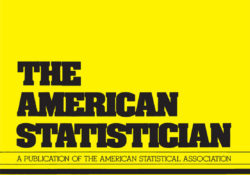tandfonline.com har udgivet en rapport under søgningen “Teacher Education Mathematics”: Communicating with children and adolescents about the risk of natural disasters Link til kilde
Like this:
Like Loading...
tandfonline.com har udgivet en rapport under søgningen “Teacher Education Mathematics”: ABSTRACT ABSTRACT Language of risk and causation pervades modern media sources. In response, statistical literacy is often framed as a critical means of understanding such discourse. At Michigan State University, several faculties have worked to create a new mathematics course, entitled Quantitative Literacy, to fulfill the University’s general education mathematics requirement. Though the course does not center exclusively on statistical thinking and methods, the curriculum does include attention to science reports in the media, among other topics, which are often based on research using statistical methods. In an effort to begin to understand how students reason with such articles before having taken the course, students in Quantitative Literacy answered several open-ended questions at the beginning of the semester in response… Continue Reading →
Like this:
Like Loading...
tandfonline.com har udgivet en rapport under søgningen “Teacher Education Mathematics”: Abstract Formulae display:?Mathematical formulae have been encoded as MathML and are displayed in this HTML version using MathJax in order to improve their display. Uncheck the box to turn MathJax off. This feature requires Javascript. Click on a formula to zoom. Abstract It is widely acknowledged that the biomedical literature suffers from a surfeit of false positive results. Part of the reason for this is the persistence of the myth that observation of p < 0.05 is sufficient justification to claim that you have made a discovery. It is hopeless to expect users to change their reliance on p-values unless they are offered an alternative way of judging the reliability of their conclusions. If the alternative method is to have a chance… Continue Reading →
Like this:
Like Loading...


